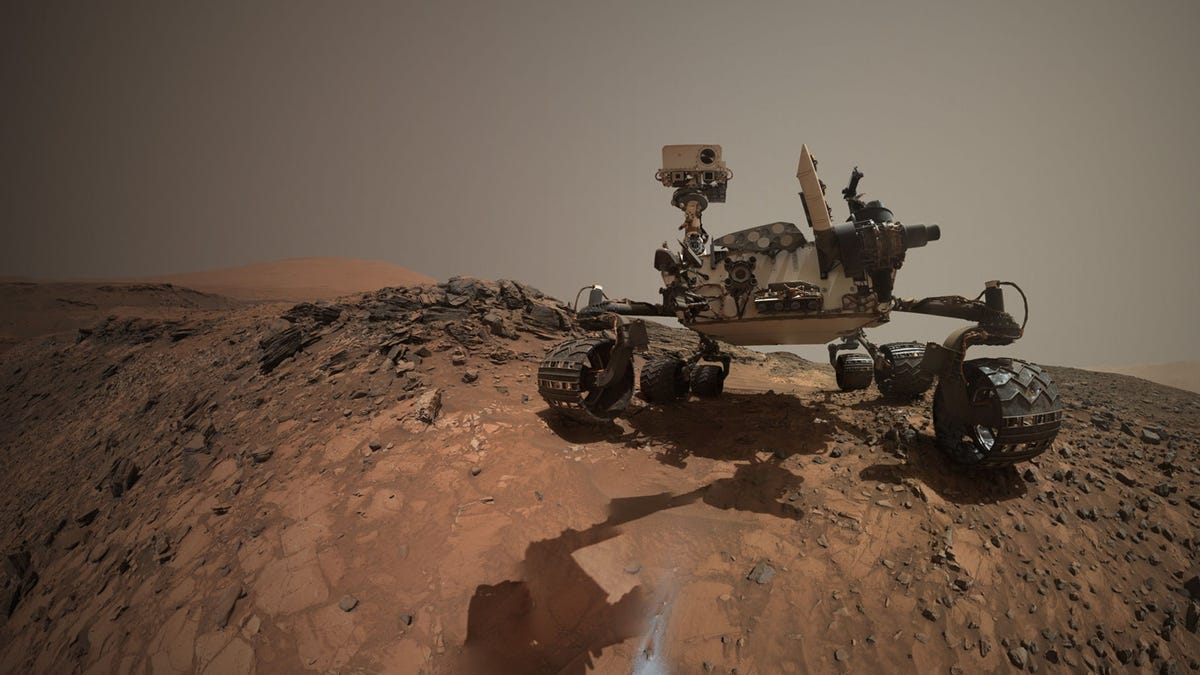
This self-portrait of Curiosity, which is a combination of images, shows the rover at the Buckskin drill site. (NASA/JPL-Caltech/MSSS)
NASA scientists were surprised to discover a mineral on Mars called tridymite, the presence of which suggests a dramatic volcanic past on the red planet.
On July 30, 2015, the space agency’s Curiosity rover drilled into the Gale Crater, and found the mineral in “high concentrations,” according to a new study on the unforeseen find.
The spot in the crater where the rover made the discovery is called “Buckskin.”
"The discovery of tridymite was completely unexpected,” Douglas Ming, a coauthor on the new paper and a planetary scientist at NASA, said in a statement. “This discovery now begs the question of whether Mars experienced a much more violent and explosive volcanic history during the early evolution of the planet than previously thought."
Related:
That’s because tridymite comes from volcanoes, like Mount St. Helens, the paper’s lead author, Richard Morris, explained in a statement. “On Earth, tridymite is formed at high temperatures in an explosive process called silicic volcanism,” he said.
The researchers are also considering the fact that the tridymite could have been formed at lower temperatures, but haven’t yet found anything to support that theory.
A study on the surprising discovery was published in the journal PNAS.
Follow Rob Verger on Twitter: @robverger
